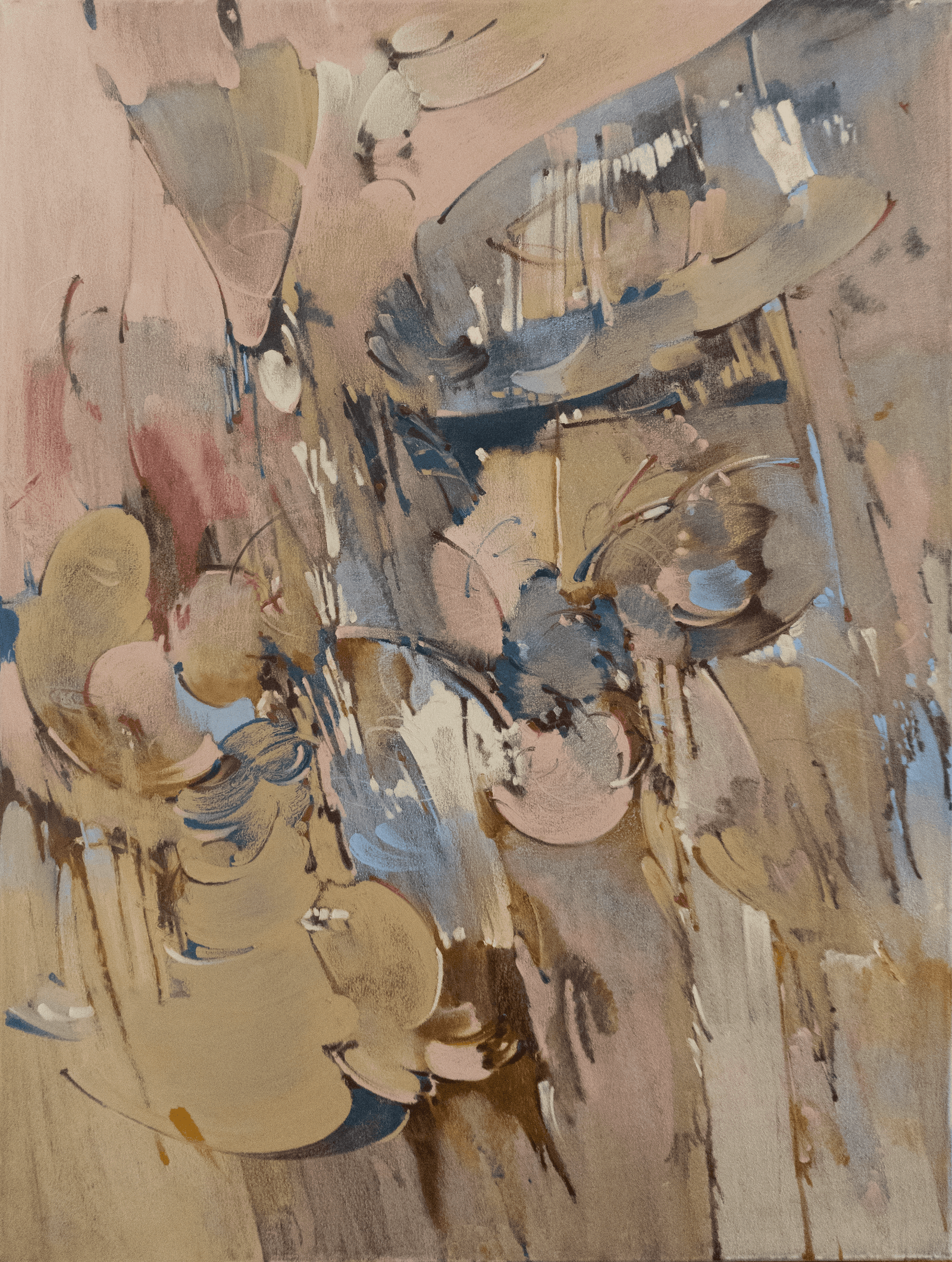Kaifan Wang
Wade Through Until The Waters Blue
➝ Download Press Release
The great Brazilian poet Carlos Drummond de Andrade (1902 – 1987), one of the most important names of local modernism, once turned a complaint into its artistic program. He said that “being modern” turned out to be “boring,” remaining for him to become, without modesty, “eternal.” In addition to the taste for puns typical of that generation, two things stand out. First, the poet recognized that modernism was, in a way, a historical phenomenon and would exhaust its powers at some point. But most importantly, Drummond realized that modernism was a concept that applied only to specific locations—namely, the European context. Brazilian poetry and art, in general, as it turns out, responded to different impulses and preoccupations. Ultimately, it should be considered according to other criteria, not those operating elsewhere. Specifically, it should be judged according to its temporality.
Despite the apparent differences, the art of Kaifan Wang, shown now for the second time in a solo exhibition at GNYP Gallery Berlin, seems to fit quite nicely into this notion. The conceptual boundaries pointed out by Drummond interact differently also in his work. One should pay attention to its specific ciphers to better appreciate his particular force if one doesn’t want to feel misled; Wang’s art is what it looks like at first sight but much more.
Indeed, the primary inclination of his canvases—works full of controlled yet free gestures, subtle and at times harsh color collisions, and lacking a noticeable mimetic animus—situate them in what we would call “abstract art,” one of modernism’s most important manifestations in the visual field. Besides, the sheer size of a canvas like “Wading Through Water,” to give one example, testifies to one of modernism’s most consequential nods: the utopian desire to encompass the world, or even better, the desire to turn the world into art. Without clear borders, it is as if the painting invades the external domain, dragging us inside its premises. That is what was behind the increasingly enormous canvases painted by Claude Monet (1840 – 1926) in his later years. However, no artistic analysis is content with a mere visual approximation. While modernism was notorious for its disdain for tradition, Wang’s works, on the other hand, stablishes a very productive and generous relationship to history. In his case, his paintings reference to names like Zhao Ji (1082 – 1135), the eight emperor of Song Dynasty, famous for his paintings and calligraphy, done more than a thousand years ago. The same dimensions are there, as also the color palette and the narrative feeling pointing to a practice that, all in all, is more than a classic—it hovers closely to the notion of the eternal. Moreover, at the end of the spectrum, one finds echoes of the European Renaissance, a presence sensible through the specific colors Wang uses. The limited chromatic array of choices can be found, say, in a fresco (think of the castoff colors on a church wall) or in the fluid indistinction between background and foreground. In other words, one pigment invades and interacts with the other, creating a constant motion highlighted by the broken circles, traces, and outlines essayed by the artist. What is behind these influences, in any case, is the approximation of the Orient and Occident through a recognition of their mutual and dynamic pollination. Beyond looting or violent conquest debates, it suggests how ideas were integrated, changed, and further distributed. The idea of the cherry picker is a case in point. As many of the titles of the paintings suggest, that is a crucial subject matter for Wang. Cherry and willow, it seems, express the exact meaning of friendship in different cultural contexts, and it reminds us how ideas created in one context were then transported by another, like the image Dames au Parasol, created by the Dutch artist Cornelis Pronk around 1730, which was used as motive for the Chinese porcelain made in Jingdezhen ordered by the Dutch East Indian Company for the trade in Europe. It would be only too obvious to affirm that Kaifan Wang’s paintings bring together the past and the present, the East and the West. Instead, and this is one of the most contemporary aspects of his art, such notions lose their gravitational force in his work; their conceptual vigor doesn’t attain much. One doesn’t need to know any specific artist or canon to appreciate the simple beauty of these canvases. They stand on their own, indifferent to clashes with tradition or acritical homages, welcoming us into their world without passing judgment—what nowadays is saying a lot.
João Gabriel Rizek

